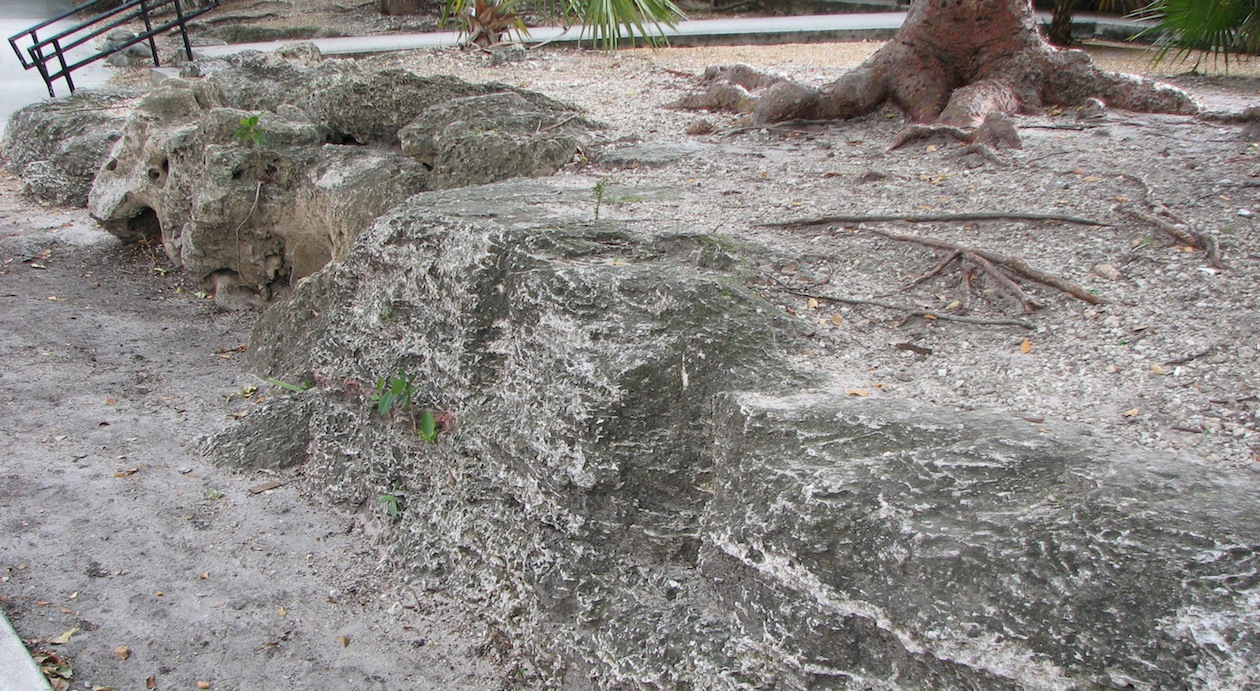Coral Coast
"…Whether built by coral animals or formed of solidifying sea drift, the shaping hand is the hand of the sea."
Rachel Carson, Edge of the Sea, p. 193.
Four glaciations
Seas American European Aftonian Nebraskan Gund Yarmouth Kansan Mindel Sangamon Illinoisan Riss Gulf of Mexico Wisconsin Würm
Shape of the shore:
Miami oolite forms the lower isles versus upper isles of the Florida keys composed of Key Largo limestone
Florida Bay and the Coconut Grove escarpment
"white water"
oolite formed chemically and biologically from bodies of sea creatures
Geology informs us about the substrate, defining the underlying features of the place
Biology transforms the terrain, redefining the substrate and adding layers to the patterns of a place:
- microorganisms -- blue green bacteria, dynoflagellates, diatoms, amoebas.
- vegetation -- algae and sea grasses.
- animals -- corals, fish, echinoderms, mollusks, birds, turtles.
Climate and prevailing wind patterns shape the forms and reassemble the remains,of the survivors, and hence any shore represents the remnants: those fortunate few.
The corals that now form the substance of the eastern Keys built their reef during the Sangamon interglacial period, probably only a few tens of thousands of years ago. Then the sea stood perhaps one hundred feet higher than it does today."
As the Wisconsin Ice sheet advanced the seas receded, the corals grew luxuriantly, if only briefly, before the sea level dropped killing the corals.
"Where the old reef lies exposed .... in many places the old coral heads are revealed, so distinctly that the species are identifiable."

